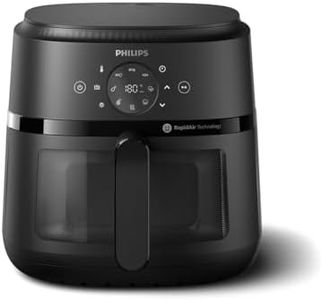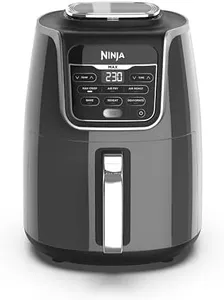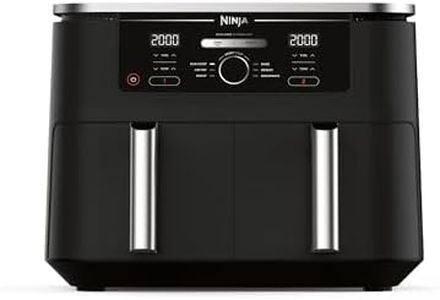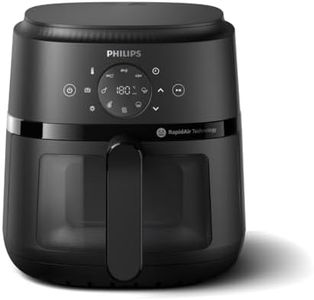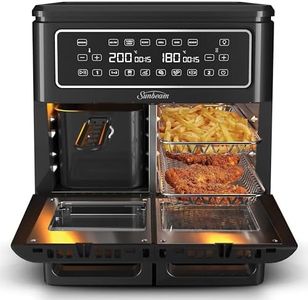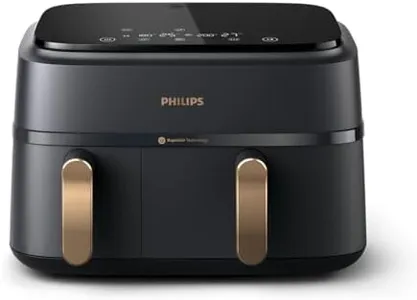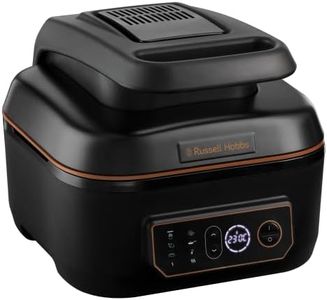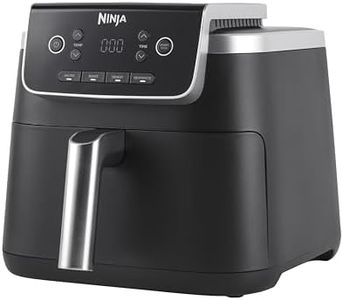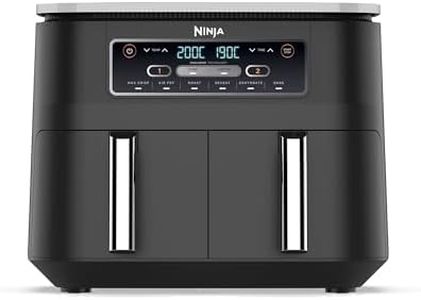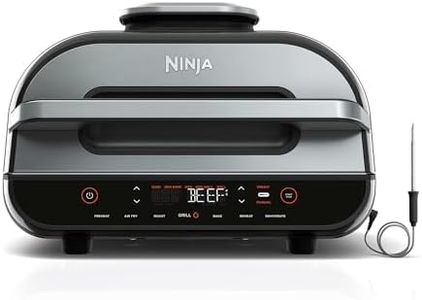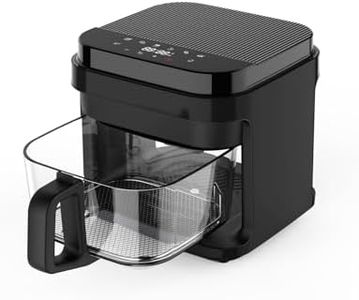We Use CookiesWe use cookies to enhance the security, performance,
functionality and for analytical and promotional activities. By continuing to browse this site you
are agreeing to our privacy policy
10 Best Airfryers
From leading brands and best sellers available on the web.Buying Guide for the Best Airfryers
Choosing an air fryer can make your cooking faster, healthier, and more convenient, but it's important to find one that fits both your kitchen space and your cooking habits. Rather than going straight for the most popular or fanciest model, it's wise to consider how often you'll use it, what types of foods you enjoy making, and how many people you'll usually be cooking for. Understanding the main features can help you avoid buying an air fryer that's too complicated, too small, or not powerful enough for your needs.CapacityCapacity tells you how much food the air fryer can hold in one go, measured in liters or quarts. This matters because a larger capacity lets you cook more food at once, great for families or if you often prepare meals for guests. Smaller capacities are more suitable for individuals or couples and take up less counter space. If you mainly cook snacks or small portions, a compact model may be all you need; for whole meals or family dinners, you'll want something bigger.
Power (Wattage)The wattage of the air fryer shows how powerful its heating element is, usually ranging between 800 and 2000 watts. Higher wattage means faster and more even cooking, but it also uses more electricity. For most users, an air fryer in the 1400-1700 watt range balances speed and energy use well. If you're cooking for several people or want crispier results more quickly, a higher wattage will be helpful, while lower wattage models are enough for simpler cooking tasks.
Temperature RangeTemperature range defines the minimum and maximum temperatures the air fryer can reach. A wider range means you can cook a bigger variety of foods, from gentle reheating to crisping or even baking. Most air fryers can go from about 180°F (80°C) up to 400°F (200°C). If you expect to air fry, bake, roast, and reheat a variety of dishes, choose a model with a broad temperature range. If you'll mostly be air frying snacks, you may not need the highest temps.
Cooking Presets & ControlsCooking presets are pre-programmed settings for specific foods like fries, chicken, or fish. Controls can be digital with a display or simple dials. Presets make everyday use quicker and are helpful if you're unfamiliar with air fryer cooking, while manual controls offer more flexibility for experienced cooks. If you like convenience and simplicity, look for more presets; if you prefer to experiment, make sure you have manual time and temperature settings.
Ease of CleaningEase of cleaning is about how quick and simple it is to wash the basket and tray. Removable, non-stick components that are dishwasher-safe will save you time and hassle. This is important if you plan to use your air fryer often or hate scrubbing pans. Check if the parts you’ll wash the most are easy to remove and clean. If low maintenance matters to you, prioritize models with dishwasher-safe pieces.
Size and Counter SpaceThe physical size of the air fryer affects where you can put it in your kitchen. Larger models need more space and may be heavier, making them less easy to move or store away. If your kitchen is small, pick a compact model that doesn’t crowd your countertop. If space is no problem, you can go bigger, especially if you need higher capacity.
